School nursing is a unique and rewarding branch of the nursing profession that blends clinical care with education and community health. School nurses handle everything from everyday scrapes and tummy aches to managing chronic conditions and emergencies on campus. This role is vital because healthy students are better learners—a school nurse helps keep kids “healthy, safe, and ready to learn.”
This nursing career guide will walk you through what it takes to become a school nurse, what the job involves, and how to thrive in this meaningful career path.
What is School Nursing?
“School nursing is a specialized practice of nursing that advances the well-being, academic success, and lifelong achievement and health of students. Keeping children healthy, safe, in school, and ready to learn should be a top priority for both healthcare and educational systems,” states the US National Association of School Nurses (NASN) in its position statement on the ‘Role of the 21st Century School Nurse’. “With approximately 50.1 million students in public elementary and secondary schools, educational institutions are excellent locations to promote health in children, and the school nurse is uniquely positioned to meet student health needs.”
The practice of school nursing began in the United States on October 1, 1902. Lina Rogers, the first school nurse, was hired to reduce absenteeism by providing nursing care to students and families regarding their healthcare needs related to communicable diseases. She led the implementation of evidence-based nursing care across New York City schools. Since that time, the role of school nurses has expanded and become increasingly diverse.
What is a School Nurse?
A school nurse is a licensed nurse who provides healthcare services in an educational environment, typically in K-12 schools (and sometimes preschools or colleges). School nurses care for students who become sick or injured during the school day and help students with chronic health conditions manage their care so they can attend class safely. This specialized practice of nursing “protects and promotes student health, facilitates optimal development, and advances academic success”, according to the National Association of School Nurses.
Unlike hospital nurses, school nurses usually work independently, serving as the sole health professional in a school. They maintain student health records, ensure immunizations are up to date, and often act as liaisons between the school, families, and healthcare providers. School nurses serve all ages—from young children who may need help with basic care like handwashing, to teens who might seek advice on sensitive issues. In all cases, the school nurse’s goal is to keep students healthy, in class, and ready to learn.
School nurses are the frontline guardians of student health, seamlessly blending clinical care with education to keep children in class and thriving. They handle everything from daily management of chronic conditions—like asthma or diabetes—to treating cuts and fevers, all while delivering life-saving interventions in emergencies. By monitoring immunizations, controlling outbreaks, and teaching hygiene and mental-health awareness, they prevent absences and foster a safer learning environment. Acting as the bridge between families, educators, and healthcare providers, school nurses advocate for every child’s well-being and ensure equitable access to care, so all students can focus on what matters most: learning.
What Do School Nurses Do?
What does a school nurse do? School nurses do far more than tend scrapes and bumps. Key duties typically include:
1. Acute Care & First Aid
School nurses are critical in providing immediate care for everyday injuries such as scrapes, sprains, nosebleeds, and common illnesses like headaches, stomachaches, fevers, and flu-like symptoms. They are also trained to manage urgent situations, including asthma attacks, seizures, head injuries, anaphylaxis, and diabetic emergencies—making quick decisions about when to administer emergency medications like EpiPens or rescue inhalers, notify parents, or call emergency services.
Using sound clinical judgment, school nurses must determine which cases can be safely treated on site and which require further medical attention, ultimately helping to reduce unnecessary absences and emergency room visits.
2. Chronic Condition Management
School nurses develop and implement Individualized Healthcare Plans (IHPs) for students with chronic conditions such as asthma, diabetes, seizure disorders, severe allergies, and ADHD, ensuring consistent and appropriate care throughout the school day.
They are responsible for administering daily and emergency medications, monitoring students’ health, and training school staff to assist when necessary—such as checking insulin levels or using inhalers. Additionally, nurses empower students by teaching age-appropriate self-care strategies, helping them manage their conditions independently and confidently, which supports both their health and academic success.
3. Health Screenings and Disease Prevention
School nurses play a key role in preventive health by conducting routine screenings for vision, hearing, dental issues, scoliosis, and BMI, helping to identify undiagnosed conditions that could impact a student’s ability to learn. When screenings reveal concerns, nurses coordinate follow-up care by referring families to appropriate health providers and facilitating communication with local clinics. They also manage immunization compliance by maintaining accurate vaccination records and may organize school-based vaccine clinics, particularly during flu season or disease outbreaks, to protect the wider school community.
4. Health Education & Wellness Promotion
School nurses actively support health education by partnering with teachers to integrate topics like hygiene, puberty, nutrition, sexual health, substance abuse, and mental wellness into the classroom curriculum. They lead awareness campaigns on issues such as anti-bullying, suicide prevention, handwashing, and dental hygiene, promoting a culture of well-being throughout the school. Additionally, they engage with parents to provide guidance on managing chronic conditions, recognizing developmental milestones, and fostering healthy habits at home.
5. Mental Health Support
School nurses help support student mental health by noticing early signs of emotional distress or behavioral changes and connecting students with school counselors or external professionals when needed. They are often the first responders during mental health crises such as panic attacks, suicidal ideation, or trauma, providing immediate care and stabilization. Beyond individual cases, school nurses advocate for a supportive and inclusive school environment, promoting trauma-informed practices and working to reduce stigma surrounding mental health issues.
6. Leadership, Policy, and Advocacy
School nurses take on leadership roles by contributing to the development and enforcement of health policies, including allergy action plans, concussion protocols, and infectious disease measures. They play a key part in emergency preparedness by serving on crisis and safety teams that plan for fire drills, lockdowns, and medical emergencies.
School nurses also handle compliance tasks, maintaining accurate health records, submitting required state health reports, and ensuring adherence to privacy laws like HIPAA and FERPA. Their work involves close collaboration with teachers, counselors, special education staff, and outside providers to support students with IEPs, 504 plans, and other behavioral or medical needs. Additionally, school nurses advocate for health equity, working to ensure that underserved or at-risk students have the care, resources, and accommodations necessary for academic success.
7. Family and Community Liaison
As a vital link between school, home, and community, school nurses communicate regularly with parents to keep them informed about their child’s health, medications, or screening outcomes, and offer guidance or referrals when needed. They also help families navigate and access local health services, mental health resources, or public programs like Medicaid and nutrition assistance. In addition, school nurses collaborate with public health departments during disease outbreaks and contribute to broader community health initiatives, often organizing programs directly through the school setting.
As leaders who bridge healthcare and education, school nurses truly wear many hats. On any given day, they might transition from comforting a kindergartener with a fever, to training staff on EpiPen use, to filing state health reports. This dynamic, multifaceted role is what makes school nursing both challenging and rewarding.
Where Do School Nurses Work?
School nurses work in dynamic educational settings where no two days are the same. Their environment ranges from bustling public schools to specialized centers for students with medical or developmental needs. While they follow the school calendar, their role extends beyond the health office, requiring flexibility, teamwork, and the ability to manage diverse student health needs. Here are some of the work environments and niche roles a school nurse might find:
Public Schools (K-12)
The majority of school nurses work in public elementary, middle, and high schools. In a public school, you could be assigned to one school building or cover multiple schools. Large high schools might have a full-time nurse (or even a team of nurses), whereas in some districts, a single nurse travels between an elementary and a middle school, for example.
Public school nurses deal with a wide range of health issues reflecting the diverse student body—everything from playground injuries to managing feeding tubes or ventilators for medically fragile students in special education. They also navigate public health reporting and compliance with state laws (immunizations, screenings, etc.) that public schools must follow.
Private and Parochial Schools
Private schools, including religious (parochial) schools, also hire school nurses. These can range from small academies to large preparatory schools. In some private schools, the nurse might have additional roles or a different student demographic (for instance, boarding schools where the nurse may assist with residential students’ health needs after hours).
Private schools sometimes have more flexibility in hiring (occasionally employing part-time nurses or allowing an LPN if an RN isn’t required by law), but many still prefer an RN. Interestingly, nurses in private schools often report slightly higher salaries than those in public schools, possibly due to different funding structures or full-year employment in boarding schools.
School District Administration
In larger school districts, experienced school nurses may move into district-level roles, overseeing health services for multiple schools. Titles like School Nurse Coordinator, Lead School Nurse, or Health Services Director involve supervising the nursing staff, developing district-wide health policies, organizing training, and serving as the liaison with public health authorities. These positions often require significant experience and sometimes a master’s degree, but they allow nurses to shape the big picture of school health programs.
Specialized Schools and Programs
Some school nurses work in settings serving specialized student populations. This could include schools for students with severe disabilities, alternative schools for youth with behavioral or psychiatric needs, or vocational schools. In these environments, a nurse might need specialized knowledge—for example, more intensive care skills in a school for medically fragile children, or mental health expertise in a therapeutic school. School nurses can also be found in preschools or early childhood centers, ensuring even the youngest learners are safe and healthy.
Colleges and Universities
Nurses who work in college campus health centers are not typically called “school nurses,” but they fulfill a similar function for older students. These are often nurse practitioners or RNs under a physician’s supervision, providing clinical care to college students. It’s a distinct career path (college health nursing) but related in the sense of being an on-site healthcare provider in an educational institution. Some school nurses with BSNs go back to school for a master’s to become a Family Nurse Practitioner or Pediatric NP and then practice in college health or as a primary care provider in a school-based health center.
Summer Camps and Youth Programs
Outside of the traditional school year, many school nurses pick up work as camp nurses during the summer. Summer camps (day camps and sleep-away camps) hire nurses to manage meds, treat injuries, and handle health forms for campers. While not a “school” setting, the camp nurse role closely aligns with school nursing skills. Similarly, other youth programs (sports leagues, youth correctional facilities, residential programs) may employ nurses—these can be good short-term or seasonal work opportunities, and they often value nurses with pediatric or school experience.
Community and Public Health Roles
Because school nurses are embedded in the community, some take on broader public health functions. For instance, a county health department might employ school nurses to run health education programs in schools or coordinate care for underserved student populations. During public health crises (like a pandemic), school nurses might partner with local health officials on contact tracing, vaccination clinics, or health communications targeted at schools.
The core setting for school nursing is any place where there are students in need of healthcare support. Whether in a single elementary school or overseeing multiple schools across a district, school nurses adapt to the environment. They all share the mission of keeping students healthy so they can learn—but they may practice that mission in different ways, from direct care in the nurse’s office to high-level program coordination. If you enter this field, you’ll find you have options to shape your career based on the age group you enjoy, the type of community you’re in, and the health issues you’re passionate about.
Schedules, Caseloads, and Specializations of School Nurses
School nursing follows the rhythm of the academic year, offering a predictable Monday-to-Friday schedule that typically runs from around 7:30 a.m. to 3:30 p.m. Evenings, weekends, and school holidays—summer included—are generally free, though nurses may occasionally stay late for after-school programs, parent meetings, or unexpected emergencies. This alignment with the school day makes the role particularly attractive to nurses seeking steadier hours and a family-friendly career path.
Workload, however, varies widely. The National Association of School Nurses recommends one nurse for every 750 healthy students, yet many districts—especially those with staffing gaps—exceed that ratio, leaving a single nurse responsible for 1,000 or more children. In large urban schools, nurses often collaborate with counselors and social workers to address a broad mix of asthma, mental-health, injury, and chronic-disease cases. Rural nurses may cover several buildings miles apart, working more independently with fewer on-site resources; time management and prioritization become key in these settings.
Specialization further shapes practice. Some school nurses focus on special education, mental health support, or chronic disease management, tailoring care plans to students with complex needs. Whether embedded in a multidisciplinary urban health team or serving as the lone practitioner across rural campuses, the nurse’s schedule, caseload size, and chosen specialty together define daily responsibilities, stress levels, and the scope for meaningful impact on student health and safety.
How to Become a School Nurse
If you’re inspired to pursue a career as a school nurse, there are several steps you’ll need to follow. Becoming a school nurse requires becoming a registered nurse first, then gaining the specialized credentials or experience for the school setting. Here is a step-by-step guide:
1. Earn a nursing degree (ADN or BSN).
The first step is to complete a nursing education program. At minimum, you must become a Registered Nurse (RN), which requires either an Associate Degree in Nursing (ADN) or a Bachelor of Science in Nursing (BSN). An ADN program typically takes about 2 years, while a BSN is a 4-year degree. Although an ADN qualifies you to take the RN licensing exam, many schools prefer or require a BSN for school nurse positions. In fact, to earn national school nurse certification, a BSN is required. If you start with an ADN, you might later bridge to a BSN through an RN-to-BSN program. Either way, graduating from an accredited nursing program is required.
To learn more about the steps and options involved in becoming a Registered Nurse—including choosing between an ADN and BSN—check out our detailed guide on How to Become a Registered Nurse. It covers educational paths, licensing, and tips for getting started in the nursing profession.
2. Pass the NCLEX and obtain RN licensure.
After your degree, you must first obtain and maintain an active registered nurse (RN) license. After earning your nursing degree (ADN or BSN), the next step is to pass the National Council Licensure Examination (NCLEX-RN), a standardized exam that evaluates the knowledge and clinical reasoning skills necessary for entry-level nursing practice. Once you pass the NCLEX, you’ll apply for licensure through your state’s board of nursing, which is mandatory to work as a nurse in any setting, including schools. School nurses follow the same licensing rules as all RNs, meaning you’ll need to renew your license periodically—typically every two years—by meeting continuing education requirements and paying a renewal fee. States usually mandate a specific number of continuing education units (CEUs), often ranging from 20 to 30 hours, to keep your license in good standing. It’s essential to maintain an active and unencumbered license, as schools will verify your licensure status during the hiring process.
3. Gain clinical experience
To prepare for a career in school nursing, gaining clinical experience—especially in pediatrics or community health—is highly recommended. During your nursing education, focus on rotations in pediatric, family, or community health, as these settings closely reflect the types of issues you’ll encounter in schools.
If possible, seek out opportunities like an internship with a school nurse or specific coursework in school health. After graduation, working as an RN for a year or two in a clinical setting such as a pediatric hospital unit, children’s clinic, or public health department can significantly strengthen your skills and confidence. While some school nurses are hired directly out of nursing school, having hands-on experience with childhood illnesses, injuries, and chronic conditions not only enhances your resume but also helps you handle the broad range of situations in a school environment. Once hired, expect an orientation period to learn about district policies, documentation systems, and emergency procedures—mentorship from an experienced school nurse can be an especially helpful part of this transition.
4. Obtain school nurse certification or credentials
In addition to holding an RN license, school nurses may need—or benefit from—earning additional certifications, depending on their state and employer. While many districts do not require a certification beyond RN licensure, obtaining one can strengthen your credentials and open doors to career advancement. In some cases, obtaining additional certifications specific to school nursing is required, including:
National Certified School Nurse (NCSN)
The most widely recognized national certification is the National Certified School Nurse (NCSN), offered by the National Board for Certification of School Nurses (NBCSN). To qualify, candidates must have a current RN license, a BSN or higher, and at least 1,000 hours of recent clinical school nursing experience. The exam assesses knowledge of student health, nursing practices, and professional standards. Passing the exam allows you to use “NCSN” after your name, and maintaining the credential requires either re-taking the exam every five years or fulfilling experience and continuing education requirements. This certification is voluntary but often leads to better job prospects and higher pay; some school districts even offer bonuses or raises to certified nurses.
State-Specific Credentials
Many states also have state-specific credentials. For instance, California requires a School Nurse Services Credential for all public school nurses, which involves completing a state-approved educational program. Other states may impose additional exams or require coursework in education and child development. It’s crucial to check with your state board of education or school nurse association for exact licensing rules, especially if you plan to move across state lines. Private schools or summer programs often have more flexibility and may not require state-issued school nurse credentials.
Basic Life Support (BLS) and Other Credentials
Additionally, most employers require up-to-date Basic Life Support (BLS) certification, which includes CPR and first aid for all age groups. BLS is typically obtained through a 1- or 2-day course and must be renewed every 1–2 years. Some settings—especially those dealing with medically fragile populations—might also ask for Advanced Cardiac Life Support (ACLS) or Pediatric Advanced Life Support (PALS), but BLS is considered the minimum standard. Maintaining these emergency credentials is essential for responding to the variety of health issues that may arise in a school setting.
5. Apply for school nurse positions.
With your RN license (and experience and certification if obtained), you can start applying for school nurse jobs. School nurses are hired by school districts, individual private schools, public health departments, or sometimes via agencies. Be prepared to show not only your clinical skills but also your ability to work independently and your passion for children’s health. Highlight any relevant experience with kids, such as pediatric nursing rotations, camp nurse jobs, or volunteer work with youth organizations. Once hired, you may also need to maintain current CPR/BLS certification and pass any background checks required for school employees.
After meeting these requirements, you’re eligible to apply for school nurse positions. Many districts and private schools list “school nurse” positions requiring RN licensure, BSN (or enrollment in BSN program), and CPR/BLS certification, with preferred pediatric experience. From there, you can transition into the school setting and start making a difference in students’ lives.
6. Pursue Continuing Education and Professional Development.
Education doesn’t end once you land the job. Nurses are lifelong learners. To maintain your RN license, states require continuing education units (CEUs) or contact hours of ongoing training every renewal cycle (often every 2 years). Additionally, if you hold the NCSN certification, you’ll need to renew it periodically (typically every 5 years) by either re-examination or by proving you’ve completed continuing education and sufficient practice hours in school nursing. School nurses also benefit from attending workshops or conferences (for example, the NASN annual conference) to learn about updates in school health, emerging issues like pandemic response or mental health initiatives, and best practices. This ongoing training ensures you stay current with pediatric care guidelines and school health laws.
In summary, becoming a school nurse requires a solid nursing education (ideally a BSN), which takes time and an investment in tuition. The training prepares you in both the science of nursing and the nuances of caring for children. Once in the field, you’ll continue learning through experience and continuing education. It’s a commitment—but one that equips you to make a real difference in the lives of students.
Skills Needed to Succeed as a School Nurse
School nurses must possess a diverse set of skills to effectively care for students and support the school community.
Strong communication and interpersonal skills
Strong communication and interpersonal skills are essential for school nurses because they interact daily with students, parents, teachers, and healthcare providers. They must explain health concerns clearly and compassionately, especially when dealing with young children or non-medical staff. These skills also help build trust with students, which is crucial for addressing sensitive issues like mental health or chronic conditions. Effective communication ensures that health plans are understood and followed, and that collaboration among school staff is smooth and student-centered.
Independent clinical decision-making
Independent clinical decision-making is a critical skill for school nurses, as they often work alone and must assess and respond to health situations without immediate medical backup. They need to quickly determine whether a student’s symptoms require rest, parental contact, or emergency intervention. This autonomy demands confidence in clinical judgment, knowledge of common pediatric conditions, and the ability to prioritize care under pressure. School nurses must also decide how to manage ongoing care plans for students with chronic conditions, adjusting as needed. Their decisions directly impact student safety, learning readiness, and the school’s overall health environment.
Crisis management
Crisis management is essential for school nurses because they are often the first responders during medical emergencies such as asthma attacks, allergic reactions, seizures, or injuries. They must stay calm under pressure, quickly assess the situation, and take appropriate actions to stabilize the student. This includes administering emergency medications, performing first aid or CPR, and coordinating with emergency services if needed. Effective crisis management also involves communicating clearly with staff, parents, and healthcare providers to ensure the student receives timely and appropriate care. Being prepared with protocols and training helps school nurses handle crises confidently and efficiently.
Cultural competence
Cultural competence is vital for school nurses to provide respectful and effective care to students from diverse backgrounds. It involves understanding and appreciating different cultural beliefs, values, and practices related to health and illness. A culturally competent nurse can communicate sensitively and avoid misunderstandings that might affect a student’s care or cooperation. This skill helps build trust with students and their families, ensuring that health advice and interventions are appropriate and accepted. Ultimately, cultural competence promotes equity and supports the well-being of all students in a multicultural school environment.
Documentation and record-keeping
Accurate documentation and record-keeping are essential skills for school nurses to ensure continuity of care and legal compliance. They must carefully record all health assessments, treatments, medication administrations, and incidents in the student’s health records. Proper documentation helps communicate important information to parents, teachers, and healthcare providers while protecting the nurse and school in case of legal or regulatory reviews. Maintaining organized and confidential records also supports the tracking of health trends and compliance with school and state policies. Overall, thorough record-keeping is key to delivering safe, effective, and coordinated care.
How Long Does it Take to Become a School Nurse?
The time it takes to become a school nurse can vary. If you go straight into a BSN program from high school, it generally takes 4 years of full-time study to earn the degree. An ADN route takes about 2–3 years, but keep in mind you might then spend another 1–2 years completing a BSN if you choose to bridge later. After schooling, factor in a few months to study for and pass the NCLEX-RN exam and obtain your license.
| Pathway | Typical Duration | Notes |
|---|---|---|
| BSN (Bachelor of Science in Nursing) | 4 years (full-time study) | Direct entry from high school; includes clinical training. |
| ADN (Associate Degree in Nursing) | 2–3 years | Shorter program; may later bridge to BSN (additional 1–2 years). |
| NCLEX-RN Licensing | 1–3 months | Time to study for and pass the RN licensing exam. |
| Work Experience Before School Nursing | 1–2 years (optional) | Many nurses gain hospital or clinical experience first. |
| RN-to-BSN Program | 1–2 years | For ADN nurses upgrading to BSN, often part-time/online. |
| Overall Typical Timeline | 4–6 years | From starting college to becoming a licensed school nurse, including experience. |
| Fastest Route | ~3 years | ADN + quick licensure; minimal work experience. |
| Longer Route (Advanced Education) | 6+ years | Includes master’s degree or additional certifications. |
If you gain work experience first (which could be 1–2 years in a hospital or clinic), that adds to the timeline but can be concurrent with working as an RN. In summary, a typical path might be about 4–6 years from the start of college to being ready for a school nurse job (4 years BSN + licensing + some experience), though it can be shorter with an ADN or longer if pursuing advanced education. Everyone’s path is a bit different—some may become a school nurse in as little as 3 years (ADN route plus quick licensure), and others may take closer to 6 or more years, especially if they pursue a master’s degree.
How Much Does it Cost to Become a School Nurse?
The cost of becoming a nurse can range widely based on the program and school you choose. ADN programs at community colleges tend to be less expensive (for example, some two-year programs cost around $12,000–$35,000 total). BSN programs have a bigger range: at public universities, in-state tuition might be relatively affordable (tens of thousands of dollars), whereas private universities can be very expensive.
| Education Path | Estimated Cost | Notes |
|---|---|---|
| ADN (Associate Degree in Nursing) | $12,000 – $35,000 total | Typically offered at community colleges; more affordable and shorter (2 years). |
| BSN (Bachelor of Science in Nursing) – Public University | ~$40,000 – $80,000 | In-state tuition tends to be lower. Additional costs for books, fees, uniforms, etc. |
| BSN – Private University | ~$70,000 – $200,000+ | Can be significantly more expensive, especially over 4 years. |
| RN-to-BSN Program | ~$8,000 – $25,000 | Designed for working nurses. Often part-time, online, and more affordable. |
| Additional Costs | Varies | Includes textbooks, clinical supplies, licensing exam fees (e.g., NCLEX), background checks, etc. |
| Financial Aid Options | Scholarships, grants, tuition reimbursement | Many scholarships are available for nursing students, especially in school or public health tracks. Some employers or districts may offer education benefits. |
The average total cost for a four-year BSN program is around $70,000, but it can range from about $40,000 up to $200,000+ in the U.S., depending on the institution. Tuition is only part of the cost—also consider books, uniforms, exam fees, etc. Fortunately, there are many financial aid options for nursing students, including scholarships (some specifically for those going into school or community health nursing). If you already have an RN license and are completing a BSN (RN-to-BSN program), those programs are often designed for working nurses and might cost less overall. It’s a good idea to compare programs and look for partnerships (some school districts partner with universities for school nurse training, or employers may reimburse tuition). Despite the investment, a nursing degree is a versatile credential that will open the door to a stable and meaningful career.
How Much Do School Nurses Earn?
School nursing offers a rewarding career not only in terms of purpose but also in job stability and benefits. Understanding the salary range and employment outlook helps nurses make informed decisions about entering this specialized field. While compensation can vary widely, the demand for qualified school nurses continues to grow across many regions.
School nursing can be a very rewarding career, but it’s important to have realistic expectations about salary. School nurses in the United States typically earn less than hospital nurses, largely because they work on an academic schedule and in the education sector.
| Key Point | Details |
|---|---|
| Average Salary (U.S.) | Around $52,000 per year (~$25 per hour) |
| Salary Range Source | Payscale.com average ~$51,500 (mid-2023 data) |
| Comparison to All RNs | Median RN salary across industries is about $93,600 (2024 data) |
| Reason for Lower Salary | School nurses work 9-10 months/year on an academic calendar; often paid on teacher salary scale |
| Salary Difference | Approximately $20,000 less per year than hospital nurses with similar credentials |
| Work Months vs. Salary | Salary corresponds to fewer months worked; some supplement income with summer jobs |
| Hourly Pay Consideration | Hourly pay during working months may narrow the apparent pay gap |
According to recent data, the national average salary for a school nurse is around $52,000 per year (about $25 per hour). This is a general figure—actual salaries vary by region, experience, and the specific employer. The website Payscale reported an average of about $51,500 as of mid-2023, which is in the same ballpark. For context, the median salary for all RNs across industries is much higher (around $93,600 as of 2024). School nurses earn less in part because they usually work 9-10 months a year instead of year-round, and are often paid on a teacher salary schedule. One analysis found that school nurses make about $20,000 less per year than nurses in hospitals with comparable credentials. However, remember that a school nurse’s annual salary often corresponds to fewer working months; some nurses offset this by working summer jobs or consider the time off as a benefit. When calculated on an hourly basis for the months worked, the pay gap may not be as wide as it first appears.
Where a school nurse works has the greatest impact on pay. Districts in high-cost, well-funded regions—think California, Washington, Massachusetts, or Hawaii—often post averages in the mid-60s to upper-70s, while many Southern and Midwestern areas offer salaries closer to the low-40s or low-50s. Urban systems usually outpace rural ones, and contracts vary: some cover a 10-month academic year, others span a full 12 months. Benefits comparable to teachers’—health coverage, retirement plans, generous time off—can substantially raise the overall compensation package and should be weighed alongside base pay.
Seasoned nurses steadily climb the salary ladder as annual step increases reward accumulated clinical expertise, problem-solving skills, and deep familiarity with school health protocols. Over time, these professionals may move into lead-nurse or supervisory posts that bring both higher wages and broader influence on campus-wide health policies, while also mentoring new colleagues.
Education rounds out the picture. Employers increasingly prefer nurses with a BSN, and those who pursue a master’s in nursing or public health open doors to administrative or specialist roles with higher earning potential. Credentials such as National Certified School Nurse (NCSN) further underscore expertise and can push a nurse toward the upper end of local pay scales. Continuous professional development, whether through formal degrees or targeted courses, not only enriches day-to-day practice but also strengthens negotiating power during salary reviews.
Job Outlook and Demand for School Nurses
The need for school nurses is growing, driven by rising student enrollment, expanding public health responsibilities, and increasing awareness of the critical link between health and academic success. Schools are facing a higher number of students with chronic health conditions such as asthma, diabetes, and epilepsy, as well as growing concerns around mental health, food allergies, and infectious disease management. The COVID-19 pandemic underscored the importance of having qualified health professionals on-site, prompting many districts to reassess their nurse-to-student ratios and invest in better health infrastructure.
Employment in school nursing is expected to rise in alignment with or slightly ahead of the broader nursing field, which the U.S. Bureau of Labor Statistics projects will grow by 6% from 2023 to 2033. Some forecasts suggest even greater growth—up to 12%—for health support roles in education, driven by national recommendations for full-time nurses in every school. However, hiring trends vary by region. Well-funded districts are expanding their nursing teams, while others, constrained by tight budgets, may require one nurse to serve multiple campuses.
The National Association of School Nurses (NASN) recommends a ratio of 1 school nurse for every 750 healthy students (and even lower ratios if there are many students with special health needs), but many areas do not yet meet that guideline. This gap represents an opportunity: as awareness grows, more positions may be created to ensure every child has access to a school nurse. In conclusion, while you might not pursue school nursing for the high pay, the job outlook is relatively stable and even improving as the importance of student health gains attention. Schools will always need health professionals, and there is a trend toward improving health services in the education system. If you’re passionate about the role, there are jobs out there—and likely more to come—with the reward of making a daily impact on children’s lives, even if the salary isn’t as high as some other nursing specialties.
Despite salary limitations compared to some hospital roles, school nursing offers a stable career with meaningful impact, especially in underserved areas where school nurses may be the only healthcare provider children see regularly. National organizations like the CDC and NASN continue to advocate for expanded access to school nurses, reinforcing their role as essential members of the educational team. For nurses passionate about child health and community wellness, this field presents growing opportunities, a strong sense of purpose, and a schedule well-suited for work-life balance.
Career Advancement Opportunities
As you gain experience in school health, a variety of leadership and specialized roles become available beyond the traditional school nurse position. From coordinating district-wide programs to influencing public health policy, these opportunities allow you to expand your impact and grow your career.
1. Lead school nurse or district nursing coordinator
With experience, school nurses can advance into leadership roles such as lead school nurse or district nursing coordinator. These positions involve overseeing health policies, mentoring new nurses, standardizing procedures across schools, and serving as a liaison between nursing staff and district administration. Leadership roles also often come with increased salary and broader influence over student health initiatives. Nurses in these roles help shape district-wide health strategies and ensure compliance with state regulations.
2. Public health roles
School nurses often transition into broader public health roles due to their experience with prevention, community outreach, and managing population health. They may work for local health departments, state agencies, or nonprofit organizations in roles that involve immunization programs, disease surveillance, or health education. These positions can offer more variety in day-to-day work and allow nurses to impact health policy at a community or state level. A background in school nursing provides excellent preparation for addressing public health concerns across age groups.
3. Health education and counseling roles
School nurses who enjoy direct student interaction and education may find rewarding opportunities in health education or counseling. This can include teaching health classes, designing wellness curricula, or working closely with guidance counselors on mental health initiatives. Some may even pursue certification as school counselors or health educators. These roles expand the nurse’s impact from immediate clinical care to long-term behavioral and health outcomes.
4. Further education (MSN, DNP)
Pursuing an advanced degree like a Master of Science in Nursing (MSN) or Doctor of Nursing Practice (DNP) opens the door to specialized roles in administration, education, or advanced clinical practice. For example, nurses can become nurse practitioners, nurse educators, or school nurse consultants. These degrees also prepare nurses to conduct research, shape health policy, or teach future generations of nurses. Higher education can lead to significant salary increases and more flexible career options both inside and outside of school settings.
Advantages and Challenges of Being a School Nurse
Being a school nurse comes with a unique blend of rewards and demands. While the role offers consistency, meaningful impact, and a holistic approach to student care, it also involves working independently and navigating limited resources. Understanding these pros and cons can help aspiring school nurses prepare for the realities of the job.
Regular Schedule and Work-Life Balance
One of the biggest perks of school nursing is the consistent, daytime schedule. School nurses generally work during school hours, roughly 8 AM to 3 or 4 PM, Monday through Friday. There are no night shifts and typically no weekend work, which is a stark contrast to hospital nursing schedules. This makes it easier to be home with family in the evenings and maintain a routine. Moreover, school nurses usually have holidays and summers off (following the academic calendar), plus spring and winter breaks. Having summers off can be a huge benefit—you can rest, spend time with family, or even pursue another interest or per-diem job if you want extra income. This academic schedule is often cited as a major reason nurses choose school settings, especially those with school-aged children of their own.
Less Stressful Environment*
While the job can certainly be busy, many find that school nursing is less intense than hospital nursing in terms of physical demand and high-stakes pressure. You’re typically caring for generally healthy children and handling relatively minor ailments or first aid most of the time, rather than critical patients. The pace can be slower and more predictable. There’s also emotional reward in forming relationships with students over the long term, which can be more uplifting than some acute care settings.
According to nurses who have made the switch, not having to work 12-hour shifts or constantly deal with life-and-death situations can reduce burnout. In fact, the regular schedule and autonomy of school nursing can make it “less stressful than the long shifts and inconsistent schedules” of hospital roles. *Of course, stress is subjective—emergencies do happen at schools, but they are infrequent, and many days involve routine care.
High Degree of Autonomy and Impact
As the sole health professional on site, a school nurse often has a lot of autonomy. You get to run your health office the way you see fit (within policy guidelines) and make independent decisions about care throughout the day. Many nurses enjoy this professional independence after having worked in hierarchical hospital teams.
Additionally, you have a direct positive impact on children’s lives and education. It’s incredibly rewarding to know that you helped a child manage their asthma so they could stay in class, or you provided a listening ear to a teen going through a tough time. Over the school year, you see students grow and benefit from your care and education. This relationship-building aspect—becoming a trusted adult that students rely on—is a fulfilling part of the job that keeps many school nurses passionate about what they do.
School Community and Benefits
School nurses are part of the school staff community. You get to collaborate with teachers, counselors, and administrators who are all focused on helping students succeed. This can be a welcoming and mission-driven environment. In terms of benefits, school nurses (especially in public schools) often have excellent job benefits: they are government or district employees, so they may receive health insurance, retirement plans (state teacher retirement systems), and sick leave/vacation similar to teachers. There’s also strong job stability in many districts—once you’re hired, school nurse positions aren’t as frequently subject to layoffs compared to some hospital jobs, unless there are severe budget cuts.
Continued Learning and Variety
People might assume a school nurse “just deals with band-aids,” but in reality the scope can be quite broad, which keeps the job interesting. You’ll see a bit of everything: sports injuries, managing a diabetic child’s insulin pump, counseling a student with anxiety, checking for head lice, etc. Every day can bring something new, especially in a large school. School nurses also have opportunities to develop programs (like a hygiene campaign or a mental health awareness week), so there’s room for creativity and initiative. If you enjoy being a jack-of-all-trades in nursing, school nursing offers that variety.
While school nursing is a rewarding career, it also comes with its share of challenges. Nurses must often navigate demanding situations with limited support and resources:
Lower Salary
The flip side of the school nurse schedule is the pay. School nurses generally earn significantly less than nurses in hospitals or clinics. The average salary (~$50k) is lower because you’re paid on a school-year basis and the education sector traditionally pays less than healthcare. You also need the same RN education and license as a hospital nurse, but won’t always see financial rewards commensurate with that training. Some nurses find this frustrating, especially if they have student loans or financial goals. It’s important to plan financially; some school nurses supplement their income by working per diem in clinics or doing summer jobs. Also, raises and career advancement can be limited—you might top out at a certain pay unless you go into administration. While the benefit of time off is valuable, the annual income is lower and should be weighed against your lifestyle needs.
Working Alone
In a school, the nurse is often a one-person department. There’s usually no team of nurses—you are it. This means all the responsibility for student health rests on you at that site. In a busy school, this can be overwhelming: you might have a line of students needing attention at times. If an emergency happens, you don’t have another nurse to assist—you must handle it and call 911 or direct others to help as needed.
There’s also no on-site doctor; while you may have a consulting school physician or can call parents, in the moment the medical decisions are on you. Some nurses feel stressed by this independence, especially early on, as there’s a lot of multitasking and critical thinking involved without immediate colleagues to consult. You can phone other school nurses in the district for advice, but it’s not the same as having coworkers next to you. This solitary aspect can also feel isolating—you’re a healthcare professional among educators, so at times you may feel a bit alone or that others don’t fully understand your role.
Multiple Schools and Workload
In some districts, one nurse is assigned to cover multiple schools. You might split your week or day between two or three campuses, especially if those schools are smaller or the district is understaffed. Traveling between sites can be inconvenient—you might have to rush to another school if an emergency happens there, or simply juggle two different workloads and sets of records.
Even if you’re in one school, the nurse-to-student ratio can be high (some have 1 nurse for over 1,000 students). A high number of students and possibly high-needs cases means lots of responsibility. You might be simultaneously managing a diabetic student’s lunchtime glucose check while another student walks in with a playground injury and a teacher calls about a suspected case of pink eye in class. The breadth of tasks—from daily meds, chronic care, first aid, mental health crises, and administrative paperwork—can make for a very busy day. It’s a different kind of busy than a hospital (not 12-hour adrenaline rush, but many small tasks and interruptions), yet it can be tiring. School nurses must be good at prioritization and time management to handle the workload, which can lead to stress if support is lacking.
Administrative Burden
School nursing comes with a lot of paperwork and protocol. You’ll be tracking immunization compliance, maintaining files on every student’s health history, writing care plans, logging every clinic visit, filling out accident reports, and so on.
There are also meetings—you might participate in special education meetings, health advisory committees, or wellness teams. Additionally, you must ensure the school adheres to health regulations (for example, making sure medication administration is done properly by staff on field trips, or that the cafeteria follows allergy-safe practices). The documentation and follow-up (like chasing down parents for missing vaccine records) can be tedious and time-consuming. Some nurses find this bureaucratic aspect one of the less enjoyable parts of the job.
Undervalued or Misunderstood Role
Unfortunately, school nurses sometimes feel that their role is not well understood by others at the school. You might be seen as just “the person who hands out band-aids,” when in reality you have a much broader scope. In some schools, the administration may inadvertently overload the nurse with non-nursing duties (like covering recess duty or clerical tasks) if they don’t realize how busy you truly are in the health office. There can also be challenges working with parents: for example, trying to obtain necessary medical forms or immunization records from reluctant parents, or dealing with a parent upset that you sent their child home sick or didn’t call them immediately.
Diplomatic and communication skills are a must. And while most teachers and parents are appreciative, if you do encounter those who aren’t, it can be discouraging. Additionally, being the only health professional means you don’t have a built-in peer group at work—you might have to seek support from other nurses via professional associations or online communities to find people who “get it.”
Scope Limitations and Skill Maintenance
Because the school setting deals with a specific population and generally less acute conditions, some nurses worry about losing clinical skills over time. You won’t be starting IVs, managing ventilators (except perhaps for certain special-ed cases), or performing many advanced procedures that hospital nurses do regularly. If you spend many years as a school nurse, you might feel a bit rusty on hospital-based skills, which can be a concern if you ever decide to return to a clinical setting. However, you will become very adept at assessment, lone decision-making, and community health skills. It’s a trade-off to consider. Some school nurses pick up occasional hospital shifts to keep up skills or for variety.
School Nurses in Other Countries
Let’s take a peek on what school nursing is like in other countries:
United Kingdom
UK school nurses are registered nurses who complete a specialty training in public health. Entry requires being an RN (adult, child, mental health nurse or midwife) first. Then candidates undertake a 1-year (full-time or part-time) Specialist Community Public Health Nursing (SCPHN)—School Nursing program at degree or master’s level. This prepares them for public-health roles in schools and communities. School nurses in the UK work with local health teams, covering multiple schools or districts.
Canada
In Canada, school nurses are simply RNs (or Registered Psychiatric Nurses in some provinces) employed by school boards or public health units. Requirements vary by province, but generally one must complete an approved nursing diploma/degree and register with the provincial College of Nurses. There is no national school-nurse certification. Employers often look for RNs with pediatric or community health experience. Some provinces (e.g. Ontario) may prefer or require a Bachelor’s degree and offer in-service training for school health. Overall, the path mirrors U.S. RN training, with any additional school-nursing skills learned on the job or via short courses.
Australia
Australian school nurses are RNs registered under the national Nursing and Midwifery Board of Australia (NMBA). To register, one needs an accredited nursing qualification—typically an AQF Level 7 Bachelor of Nursing (or equivalent). In practice, school nursing jobs (often in private or Catholic schools) require RN registration; some roles may also consider experienced Enrolled Nurses (practical nurses) under RN supervision. There is no separate “school nurse” license; the ANMF (Australian Nursing & Midwifery Federation) has developed National School Nursing Standards to guide practice. The school nurse’s role varies by state—e.g., some states hire nurses directly, others link school nurses to community health.In all cases, the common thread is first qualify as an RN, then obtain any specialized school-health training required by the country. The titles and additional requirements differ, but the nursing education and licensure fundamentals are the same.
School Nurse Professional Groups and Resources
For those considering or pursuing a career in school nursing, it’s helpful to connect with professional organizations and boards related to the field. Here are some key resources and organizations for school nurses:
| Resource | Description | Website |
|---|---|---|
| National Association of School Nurses (NASN) | Leading U.S. organization for school nurses. Offers advocacy, standards, continuing education, and an annual conference. | nasn.org |
| National Board for Certification of School Nurses (NBCSN) | Provides the NCSN credential. Site includes certification requirements, exam info, and renewal guidelines. | nbcsn.org |
| American School Health Association (ASHA) | Multidisciplinary organization for school health professionals. Offers research and resources on comprehensive school health programs. | ashaweb.org |
| State School Nurse Associations | Local affiliates of NASN offering state-specific guidance, conferences, job listings, and support. | Search via NASN or web |
| CDC – Healthy Schools Program | Provides guidelines, tools, and advocacy resources for school health policies, chronic condition management, and emergency preparedness. | cdc.gov/healthyschools |
| School Nurse Networking Forums | Online communities (e.g., NASN forums, Facebook groups, LinkedIn, allnurses.com) for peer support, discussion, and shared experiences. | Varies (search online) |
These resources provide a wealth of information and a sense of community in the school nursing world. Whether you’re researching how to become a school nurse or you’re a veteran looking for continuing education, tapping into professional organizations will help you stay informed and connected.
Ready to Become a School Nurse?
Picture starting each morning with high-fives in the hallway and ending the day knowing a child can breathe easier, focus better, or smile wider because of you. School nursing gives you that privilege. By combining clinical know-how with compassion, you become the trusted health champion every student—and teacher—relies on.
The path is clear: earn your BSN (or ADN), pass the NCLEX, gather a bit of pediatric or community experience, and add a school-nurse credential or NCSN certification where required. Each milestone sharpens your skills and brings you closer to leading a vibrant health office or even designing district-wide wellness programs.
Yes, the salary may trail hospital rates, and you’ll often be the solo medical voice on campus. But in return you gain family-friendly hours, summers to recharge or chase new passions, and daily victories that remind you why you chose nursing in the first place. If uplifting young lives sparks your spirit, shadow a local school nurse, join your state association, or talk with program advisors today. Step into this role, and every bell that rings becomes another chance to make a lasting difference.

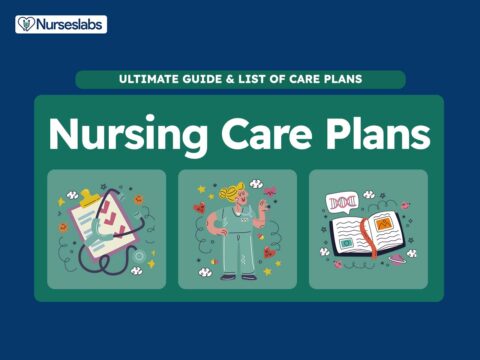
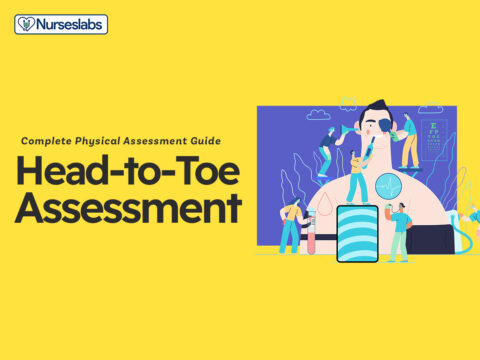
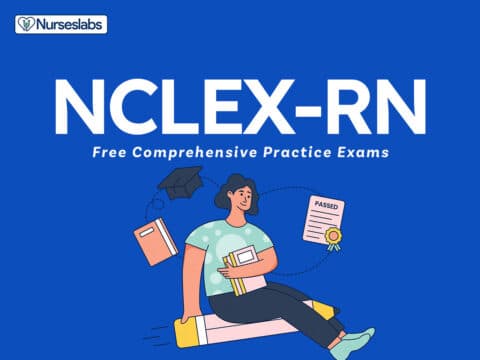

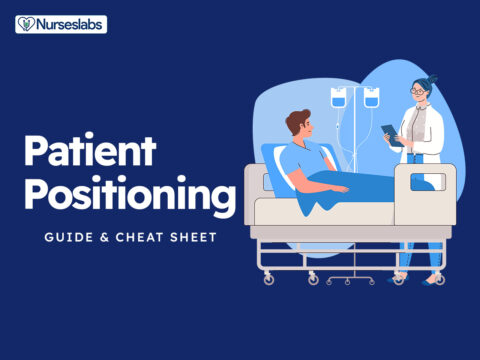
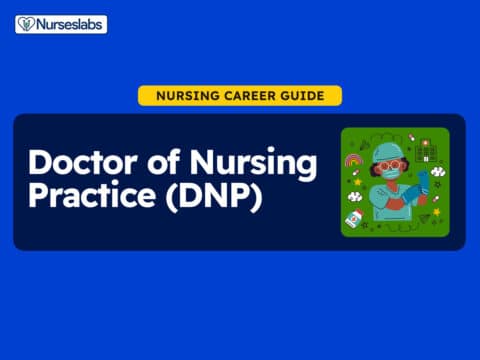


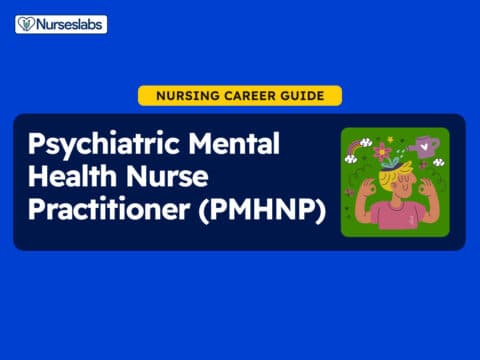
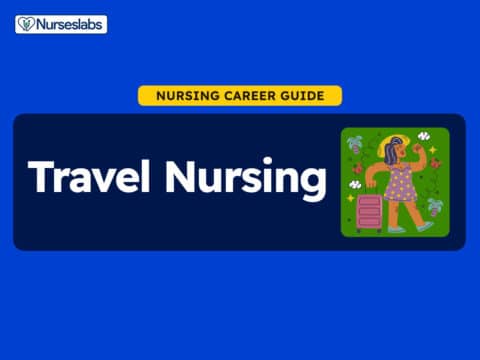
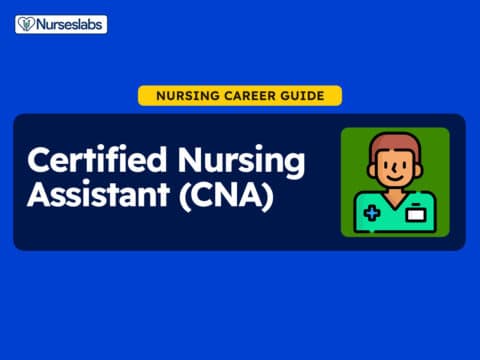


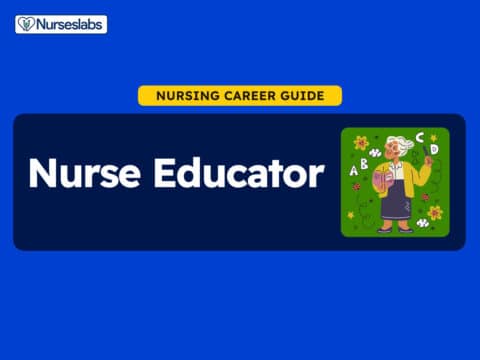

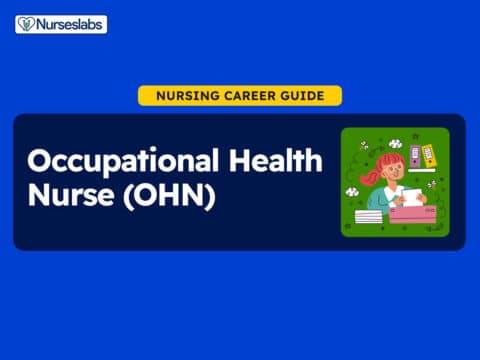
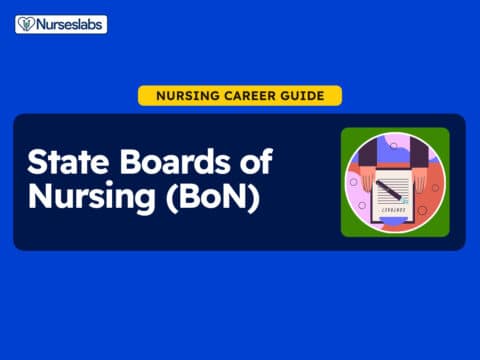
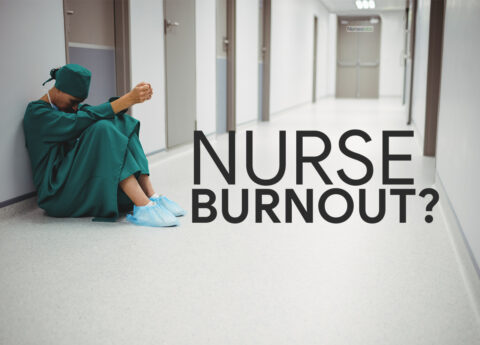


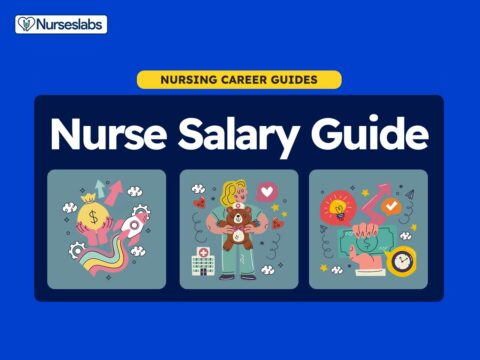




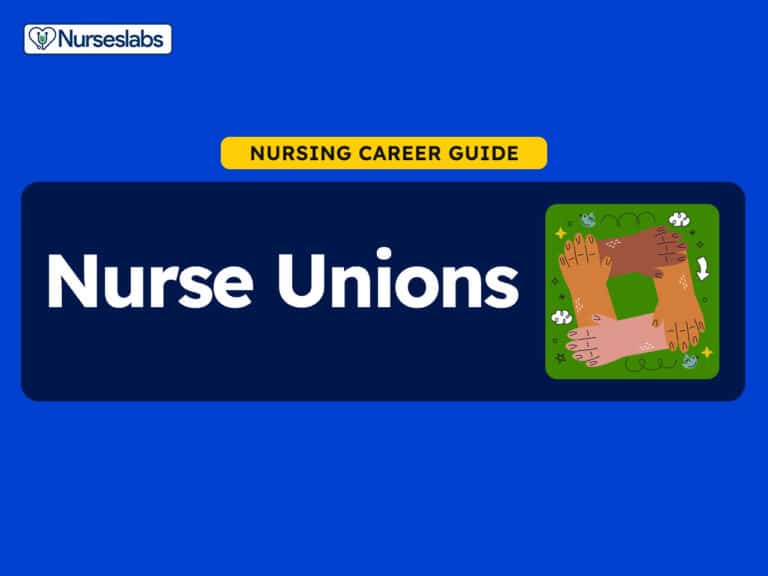







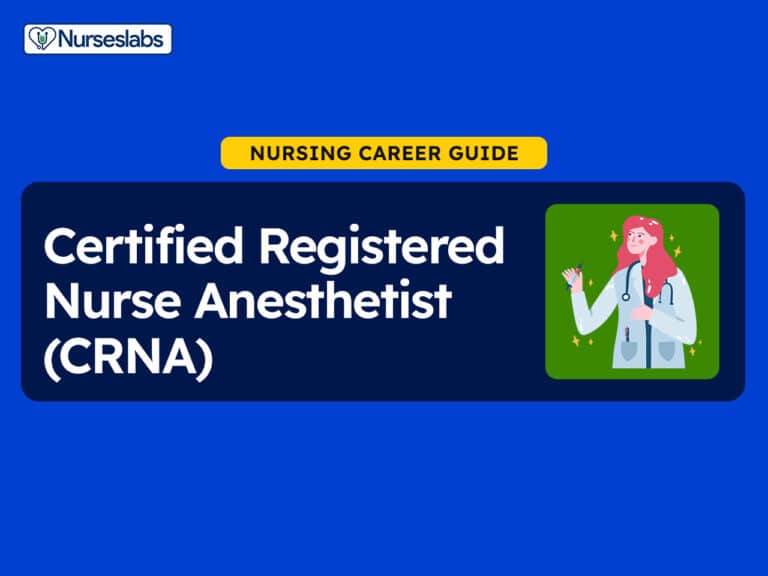
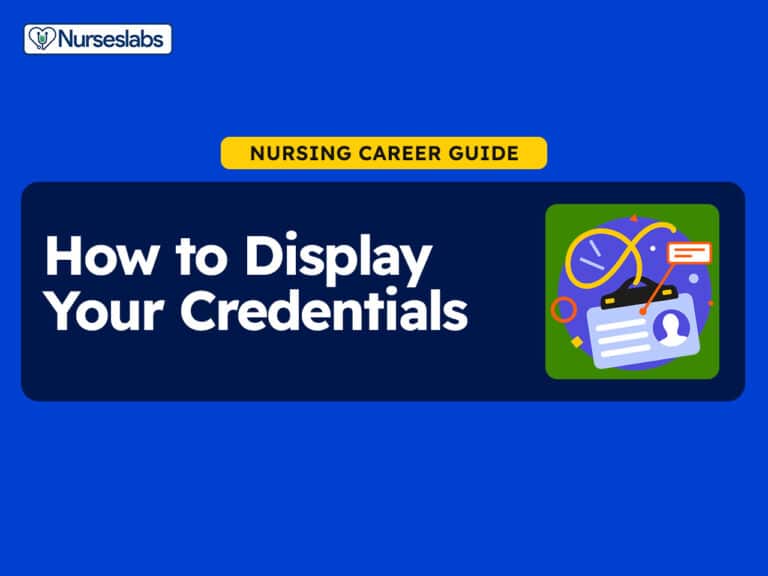
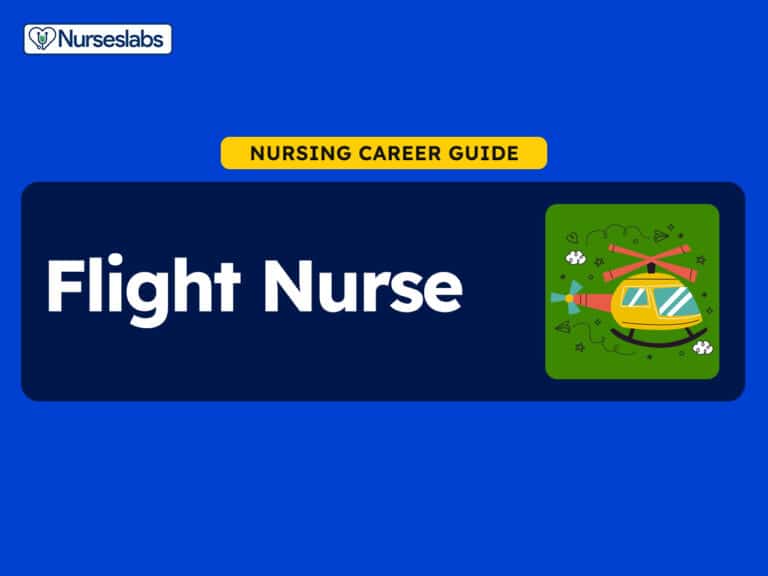
Leave a Comment